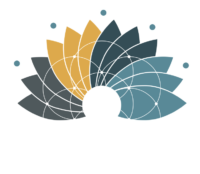 Today’s blog is the first in the Dopamine Detox series where I’ll be explaining what it is and why it is important with practical exercises and guided meditations to access its many benefits including: reducing stress and anxiety, improving focus and productivity, increasing motivation for meaningful activities, improve self-control and positive habit formation, improve mood and mental clarity, enhance the enjoyment of everyday experiences, reduce compulsive behaviours and addictions and improve motivation for long-term goals.
Today’s blog is the first in the Dopamine Detox series where I’ll be explaining what it is and why it is important with practical exercises and guided meditations to access its many benefits including: reducing stress and anxiety, improving focus and productivity, increasing motivation for meaningful activities, improve self-control and positive habit formation, improve mood and mental clarity, enhance the enjoyment of everyday experiences, reduce compulsive behaviours and addictions and improve motivation for long-term goals.
Key Topics Include:
- What Dopamine is and why is it essential for us to survive
- What is a dopamine detox
- Signs that you may need a dopamine detox
- Benefits of balancing out your dopamine pathways
- Exercise to identify your dopamine triggers and work to rewire them
- The key factors to having a successful result
- What Dopamine is and why is it essential for us to survive
Dopamine is a neurotransmitter that plays a central role in the brain’s reward system. It drives motivation, pleasure, creativity and reward-seeking behaviour. We all have it in our brains and need it for survival. Dopamine is released when we experience something pleasurable, reinforcing the desire to repeat that behaviour. This can be anything from eating delicious food to using social media to engaging in hobbies, achieving a personal goal, and falling in love.
When the brain is exposed to constant high-reward, instant-gratification activities (such as scrolling through social media, playing video games, or binging on food or TV, reckless behaviour, adrenaline-seeking sports, and performing for large audiences) our brain experiences dopamine overload. Over time, this overstimulation desensitises the brain’s reward circuits, making it harder to feel pleasure from everyday lower-stimulation activities. This leads to feelings of boredom, restlessness, depression, addiction, lack of motivation, ignoring responsibilities, the constant need for stimulation, difficulty concentrating, frequent mood swings, unrestful sleep, increased impulsivity, fatigue and burnout.
If you identify with several of these symptoms, then you could benefit from taking a closer look at creating a more healthy relationship with your dopamine pathways.
While the name dopamine detox implies a cleansing of dopamine from the brain, it’s important to note that is it not about reducing or eliminating dopamine itself. Dopamine is a natural and essential neurotransmitter in the body. Ir motivates us to eat when we’re hungry, seek loving connection and achieve long-term goals.
A dopamine detox refers instead to the temporary, voluntary abstention from activities that produce immediate pleasure or excessive stimulation, to reset the brain’s reward system. The idea is to limit highly stimulating behaviors-such as excessing scrolling on social media, compulsive eating, shopping, or gaming so that the brain can recalibrate and become more sensitive to everyday pleasures.
Methods to do this can range from complete abstinence from all external stimulation including screens, food cravings and social interactions for a short period of time like a few hours to several days to milder approaches of limiting oneself to one or two stimulating activities. The idea is to release the reliance on quick dopamine hits by reducing overstimulation, increasing self-awareness and promoting more long-term sustainable pleasure sources.
In order to promote lasting change, when we let go of a negative behaviour we must put a positive one in its place. Exercise, mindfulness, meditation, yoga, healthy eating, creative hobbies and connection with nature are all things to add to the space where the highly stimulating behaviours once were. This is imperative to the success of a dopamine detox. We must create new healthy habits based on longer-term rewards and practice them over time to reap the benefits of those rewards.
Ok so that all sounds well and good, but maybe you’re thinking it’s easier said than done. I hear you and want to say that yes, there is more to a successful dopamine detox than simply choosing more mellow activities. Putting away the high dopamine hit activities means getting still and quiet with yourself. Which for some can be terrifying.
High dopamine activities mask feelings that run more deeply in your psyche that you are avoiding, not facing or unconsciously repressing. The immediate gratification activities are in response to trying to feel better, numb out or escape from the discomfort of reality.
To repattern your brain chemistry means having to face some hard truths within yourself. Why do you choose the dopamine high overtaking personal responsibility for what isn’t working in your life? If you feel lonely for example, and turn to quick dopamine fix behaviours to feel better, you hinder yourself from healing the loneliness and in turn, create more of it.
Dopamine plays a strong role in addictive behaviours. Acting on the addiction creates a dopamine hit of pleasure. Dopamine then serves as a motivator to want more of the addictive substance to keep feeling good and repress the pain underneath.
Seeking dopamine hits in highly stimulating actions is a coping mechanism for past trauma and difficult childhood experiences. So when we break the cycle with dopamine detox it is necessary to look at the pain underneath that one is avoiding.
Depending on the childhood experiences, this may require working with an experienced therapist to safely unpack and repattern the childhood triggers. Therapies like NLP and Family Constellation work I practice as part of the Consciousness Medicine and Family Constellation 1:1 Sessions are very effective in doing this. If you feel you need some assistance you can find the details on these offerings on my website www.consciousness-medicine.com
So now that you know what dopamine is, when a detox is called for, and what you will need to address at a deeper holistic level to break the cycle of dopamine overload, I want to give you some practical tools to help you in regaining your motivation, drive, calm and excitement for life. Through the next few blogs, I’ll be guiding you to uncover, appreciate and let go of the need for highly stimulating behaviours that lead to dopamine overload.
The first step is to identify the behaviours you do that are dopamine-driven. Here are some ways to identify these behaviours and actions motivated by the pursuit of pleasure, reward and instant gratification that are at the expense of longer-term goals or overall well-being. Here’s what to watch out for:
- Compulsive or repetitive behaviours where you feel a strong urge to engage in the behaviour frequently, even if it’s not necessary or productive. If it feels challenging to stop or control the behaviour, or if feel uncomfortable or anxious without it, then this is a sign you are suppressing your real feelings by seeking the fast-acting dopamine hit. For example, how often do you pick up your phone to check social media? Do you do it without thinking? Do you do it while you are on the computer, having dinner with someone or at other times rather than staying fully present with the task at hand?
- Being driven by instant gratification. Dopamine-drive behaviours typically provide an immediate sense of reward or pleasure. Checking the notifications on your phone, eating a sugary snack, online shopping or attention seeking for example.
- A heightened sense of anticipation or excitement thinking about a behaviour is a way to release dopamine, which can drive you to seek out the activity even more.
- Mood swings, irritability, restlessness and anxiety when you are not engaging in dopamine-stimulating behaviours. When you eliminate sugar from your diet how do you feel? Or turn your phone off or put it on airplane mode? This is a sign that your brain has become accustomed to dopamine spikes associated with that behaviour.
- Difficulty enjoying activities that don’t offer a high level of pleasure.
- Are you doing the dopamine-driven behaviours as a form of self-medication, helping to escape feelings of boredom, stress, loneliness or sadness? This creates a cycle where dopamine-driven behaviours become a go-to coping mechanism, reinforcing the habit.
- Are you choosing short-term rewards over long-term consequences? Dopamine-driven behaviours provide immediate pleasure but can lead to negative consequences such as sleep disturbances, decreased productivity or strained relationships.
Take some time now to identify the behaviours that give you a quick dopamine hit and have a negative effect on your mood, focus or energy. These are your triggers.
I’d suggest starting with one trigger, one that you feel is having the most negative consequences or one you feel is excessive and not supporting your greatest good.
Now, as you move through your day become aware of when the desire for that dopamine-seeking behaviour comes up. This means staying present, aware and curious. Instead of acting on that impulse take a moment to close your eyes, breathe deeply and be present for what is alive in you. If you can, move to a place with minimal external stimulation so that you can be with the feelings and thoughts associated with the state. Sit and breathe for 90 seconds without analysis, judgment or stories. 90 seconds is as long as the physiological reaction in your body lasts. Sit, breathe and let it pass. This exercise will in itself help to reprogram your response to dopamine craving behaviours.
Set yourself up for success by creating a routine for mindful activities that will reward you in the longer term like a creative hobby, a walk in nature, a yoga practice, journaling, or meditation. Add one of these activities three times daily. Morning, midday and evening.
For example:
- Morning: Start with grounding activities like meditation, journaling, or a brief walk. This helps ease you into the day with minimal external stimulation.
- Midday: Engage in creative or physical activities such as drawing, writing, yoga, or a gentle workout. These activities release dopamine in moderate, balanced amounts without overstimulation.
- Evening: Practice wind-down routines that avoid screens, like reading, stretching, or mindful breathing exercises.
Doing this mindful practice will help you become more aware of cravings and impulses without acting on them. This will help you to understand the triggers and emotions behind the dopamine-seeking behaviours and gradually reduce their hold on you.
Tune in for the next blog as I’ll delve more deeply into how to address and heal the deeper wounds underneath dopamine-seeking behaviours.
You can enjoy listening to this article on a Healing Codes Podcast episode by clicking on the link below.
_____________
Find out more about Consciousness Medicine.
Upcoming courses, workshops and 1:1 sessions.
Sign up for my free e-newsletter from the homepage www.consciousness-medicine.com.
Stay Connected on Social Media:
Facebook: www.facebook.com/CentreforConsciousnessMedicine
Instagram: www.instagram.com/wellnesswisdomwithjulie
Linked In: www.linkedin.com/in/julie-williams-cxmed

